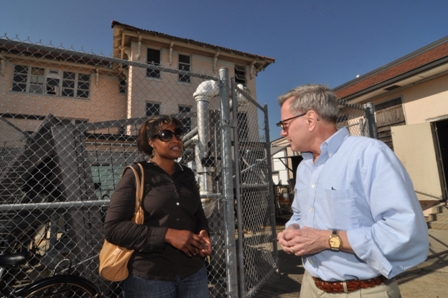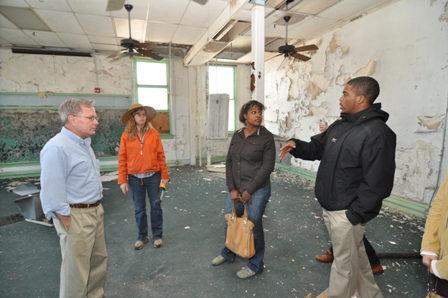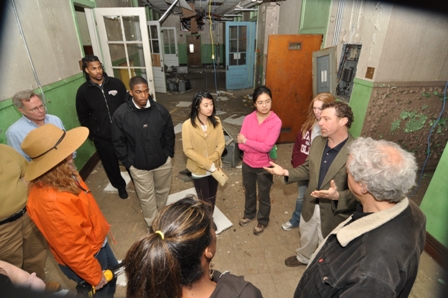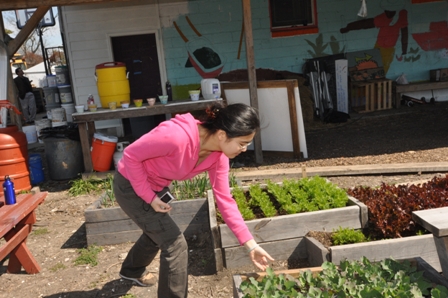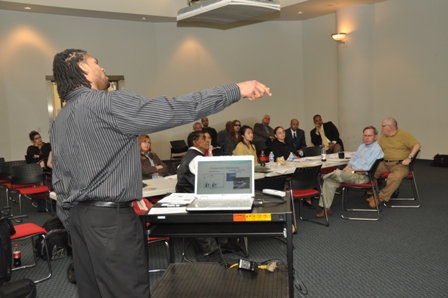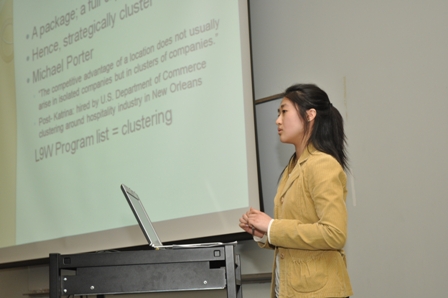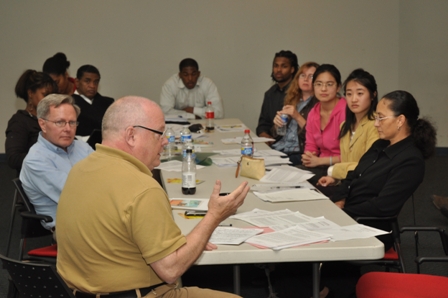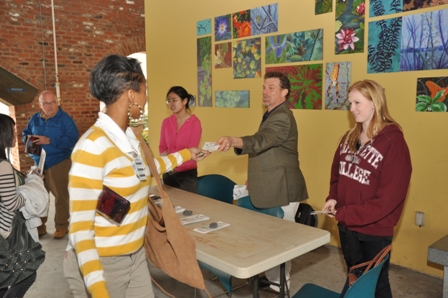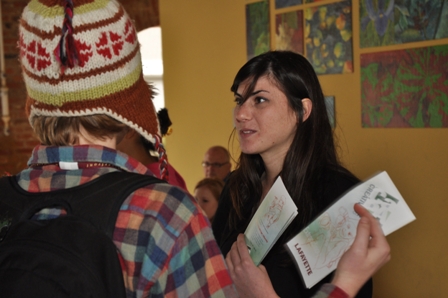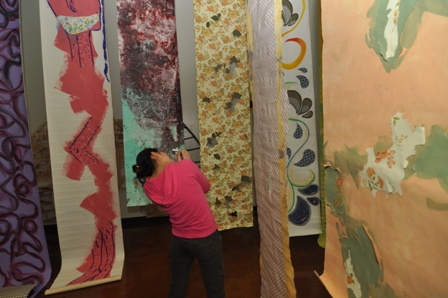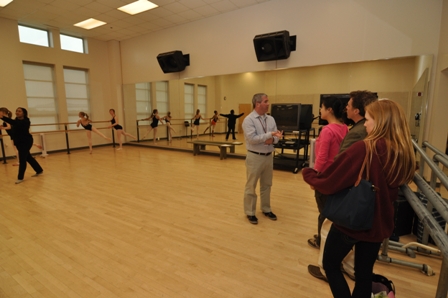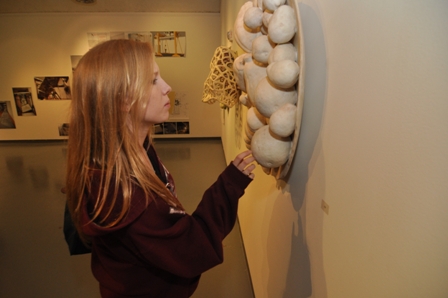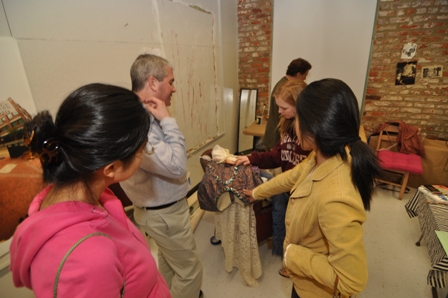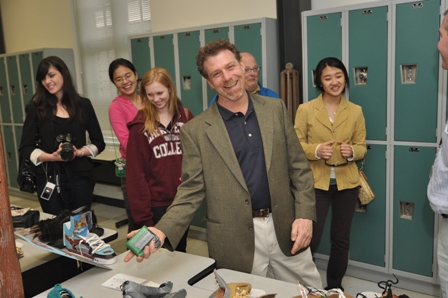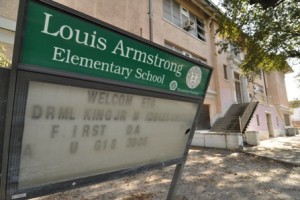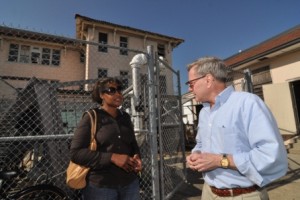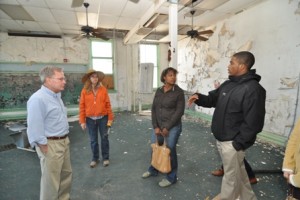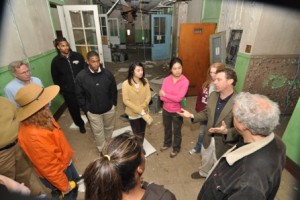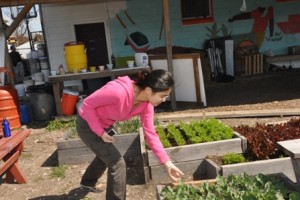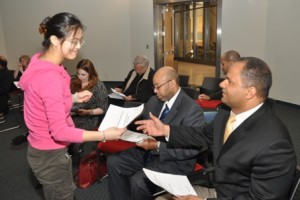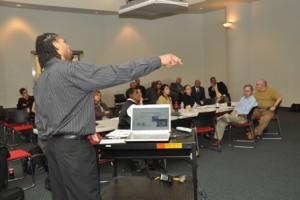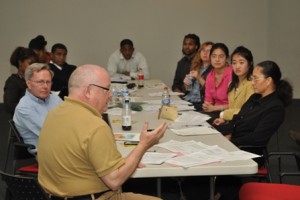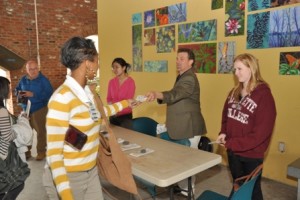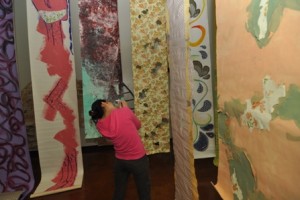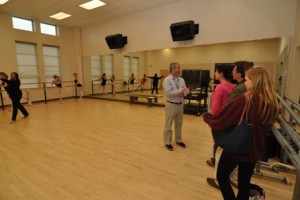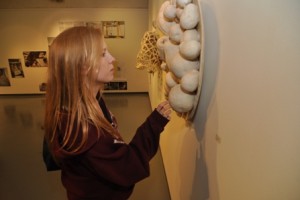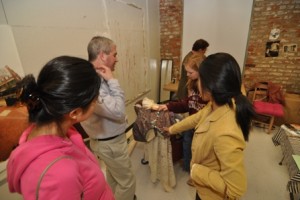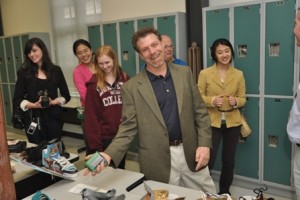A group of Lafayette students and faculty spent their spring break in New Orleans working with artists and community leaders in the Lower Ninth Ward to help them convert a former public school, abandoned since Hurricane Katrina in 2005, into a community arts and cultural center.
The trip was part of an ongoing effort since 2007 by the College’s Economic Empowerment and Global Learning Project (EEGLP) to help residents rebuild after the hurricane. The group has been focused on creating sustainable options, including projects to encourage the use of solar energy, establish urban farms, design a town center shopping area using green technology, and rebuild as a carbon-neutral community.
For this visit, the students worked to help transform the run-down Louis Armstrong School into a center for arts and culture. The multidisciplinary team comprised of economics and business, engineering, English, and art majors toured the school and made a presentation at Tulane University’s Center for Bioenvironmental Research to local political and community leaders.
“It’s in a very prominent location in the Lower 9th, so its renovation would be symbolic for the community,” says David Veshosky, associate professor of civil and environmental engineering and a faculty adviser for the New Orleans team.
According to Veshosky, the school, originally named McDonogh 19, was financed by funds from the estate of John McDonogh, who sent slave David Kearney McDonogh 1844 and his brother to Lafayette. It was the first public school desegregated under the Civil Rights Act of 1957 and served as a place of refuge during Hurricane Betsy in 1964, the most significant hurricane to hit New Orleans until Katrina.
Engineering studies majors Mitchell Bennett ’11 (Orange, N.J.) and Donald Ellis ’11 (Silver Spring, Md.) have worked on architectural issues with Veshosky for the proposed Lower 9th Ward Art, Culture, and Civic Engagement Center. They have designed floor and site plans taking into consideration the use of green space and input from local residents. The center is envisioned to provide art studios, business offices, a café area, and gallery/exhibit space.
“We want to design something that the Lower 9th Ward community can be proud of and take ownership of,” says Bennett. “This has taught us how to take the ideas of others and turn them into an actual architectural design. Donald and I both plan to go to architectural grad school, and this experience will help us develop knowledge, values, and skills that will make us successful in the real world.”
Gladstone Fluney Hutchinson, associate professor of economics and founding director of EEGLP; Ting Chiu ’11 (Bedminster, N.J.), an English and psychology double major; and Nan Li ’12 (Shanghai, China), an international commerce major, have been working on the economic and financial ramifications of redevelopment.
“Being able to witness the application of theoretical knowledge in solving real-world problems and the tangible changes it makes is extremely rewarding,” says Li. “At the same time, it can be pretty intimidating knowing that our presentation to community leaders, a parish school board, and a senator will directly impact job creation and multi-million dollar revenue.”
Programming and organization issues for the center are being handled by Ed Kerns, Eugene H. Clapp II ’36 Professor of Art; Jim Toia, director of the art department’s Community-Based Teaching program, and art majors Nina Horowitz ’11 (Warren, N.J.) and Imogen Cain ’12 (Perkasie, Pa.). The group gave a presentation on Lafayette’s arts programs to students at the New Orleans Center for Creative Arts.
“My role in the New Orleans project is not to tell the community what they need, but rather to listen to their ideas and try to implement them in the arts center,” says Horowitz, who is helping to provide creative insight within the design of the building to make the best use of the interior space.
Horowitz says that despite the hardships suffered by Lower Ninth Ward residents since Hurricane Katrina, the community is still tight-knit and has a positive attitude about the future of the neighborhood.
“This is a real-life problem and I am so fortunate to be involved as an undergrad. I will build on the relationships I form here for a very long time,” she says.

